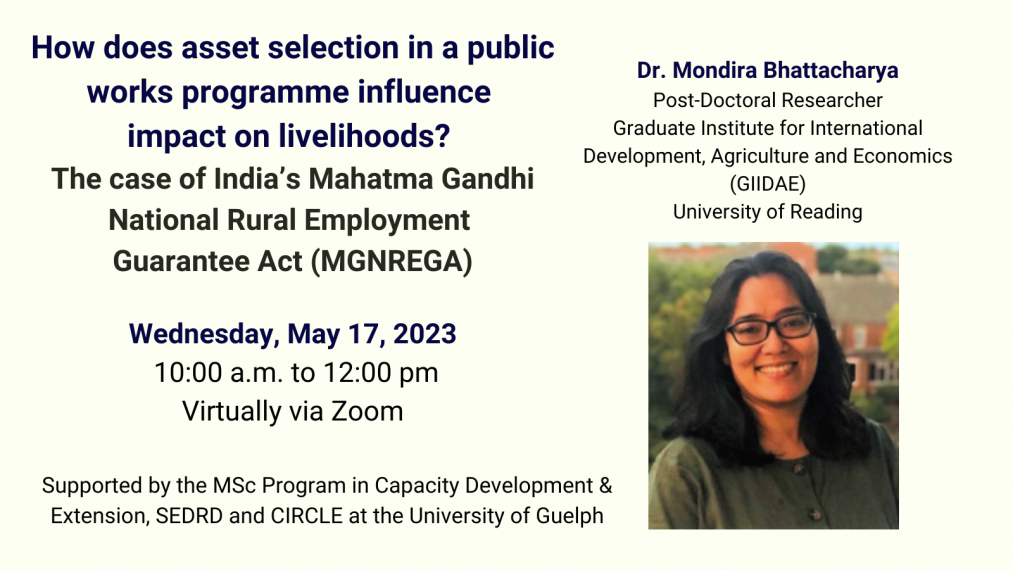How does asset selection in a public works programme influence impact on livelihoods? The case of India’s Mahatma Gandhi National Rural Employment Guarantee Act (MGNREGA)
Date and Time
Location
Virtually via Zoom

Details
Presentation and Discussion with Dr. Mondira Bhattacharya, Post-Doctoral Researcher Graduate Institute for International Development, Agriculture and Economics (GIIDAE), University of Reading
Public works programmes (PWPs) are frequently employed by governments to meet the twin challenges of short-term poverty reduction and long-term asset creation. They are an effective tool for improving food security by increasing income, improving infrastructure, creating assets, and providing a social safety net for vulnerable populations. Among the several PWPs that are in operation in many low- and middle-income countries (LMICs), India’s MGNREGA enacted in 2005 stands out as a unique rights-based and the world’s largest demand driven employment programme. Other than guaranteeing wage employment for a 100 days to adult members of every rural household, it creates durable community assets in rural areas and also targets some assets towards the most deprived sections of the rural population. Since 2014–15, the scheme has shifted focus towards the creation of individual assets on private lands of vulnerable social groups. Existing studies have mostly focused on the causal effect of MGNREGA wage income on rural labour market conditions, agricultural productivity, poverty reduction, improvement in purchasing power and environmental benefits. There is a lack of systematic studies assessing the effects of direct provision of individual assets on household livelihood outcomes. There are very limited studies on how the selection or choice of assets influences the livelihood effects of PWPs. Community assets and individual assets may differ considerably in terms of magnitude and distribution of their effects and also in terms of their equity implications and these can be studied by comparing the livelihood and well-being impacts of the different types of assets. It has been eight years now since the shift in focus towards individual assets under MGNREGA; a period long enough to assess how they generate and strengthen livelihood strategies and outcomes among beneficiaries. This research will provide enhanced knowledge base on how the choice of assets created under public works programme will build resilience among rural households and will also help in the formulation of region-specific policies for strengthening the asset position of vulnerable social groups.
Supported by the MSc Program in Capacity Development & Extension, SEDRD and CIRCLE.
Event Recording
Asset Selection in Public Works Programme Transcript
Captions and Transcript by Harshdeep Daroch, 4th year Bachelor of Arts & Sciences, specializing in Geomatics & Sociology.